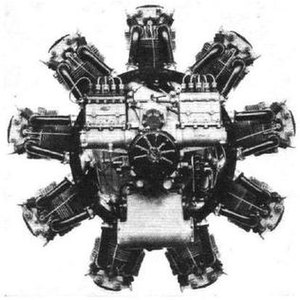Top Qs
Timeline
Chat
Perspective
Bristol Phoenix
1920s British piston aircraft engine From Wikipedia, the free encyclopedia
Remove ads
The Phoenix was an experimental version of the Bristol Aeroplane Company's Pegasus engine, adapted to run on the Diesel cycle. Only a few were built between 1928 and 1932, although samples fitted to a Westland Wapiti held the altitude record for diesel-powered aircraft at 27,453 ft (8,368 m) from 11 May 1934 until World War II.[1] The primary advantage of the Phoenix was better fuel efficiency at cruise, by up to 35%.
Remove ads
Variants
- Phoenix I: Diesel version of the Pegasus IF, 380 hp.
- Phoenix IIM: Medium-supercharged diesel version of Pegasus IM, 470 hp.
Applications
Specifications (Phoenix I)
Data from Lumsden[2]
General characteristics
- Type: nine-cylinder air-cooled Diesel radial engine
- Bore: 5.75 in (146 mm)
- Stroke: 7.5 in (190 mm)
- Displacement: 1,753 in3 (28.7 L)
- Length: 43.75 in (1,111 mm)
- Diameter: 55.25 in (1,403 mm)
- Dry weight: 1,067 lb (484 kg)
Components
- Valvetrain: Overhead valve, two intake and two exhaust valves per cylinder, pushrod-actuated.
- Fuel type: Diesel
- Cooling system: Air-cooled
Performance
- Power output: 380 hp (283 kW) at 2,000 rpm at sea level
- Specific power: 0.22 hp/in3 (9.9 kW/L)
- Compression ratio: 14:1
- Power-to-weight ratio: 0.36 hp/lb (0.6 kW/kg)
See also
Comparable engines
Related lists
References
External links
Wikiwand - on
Seamless Wikipedia browsing. On steroids.
Remove ads
